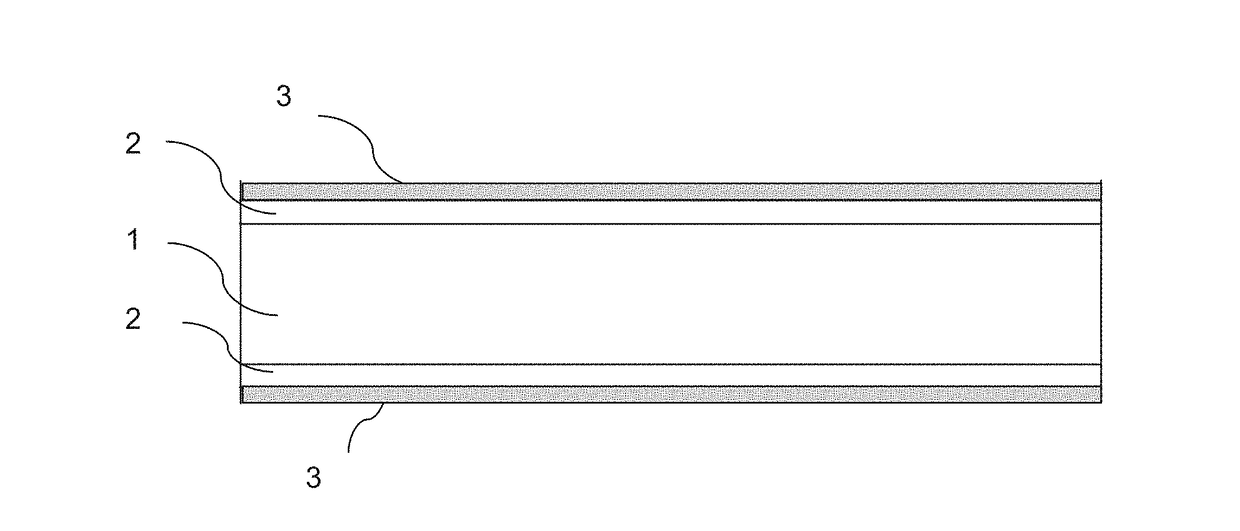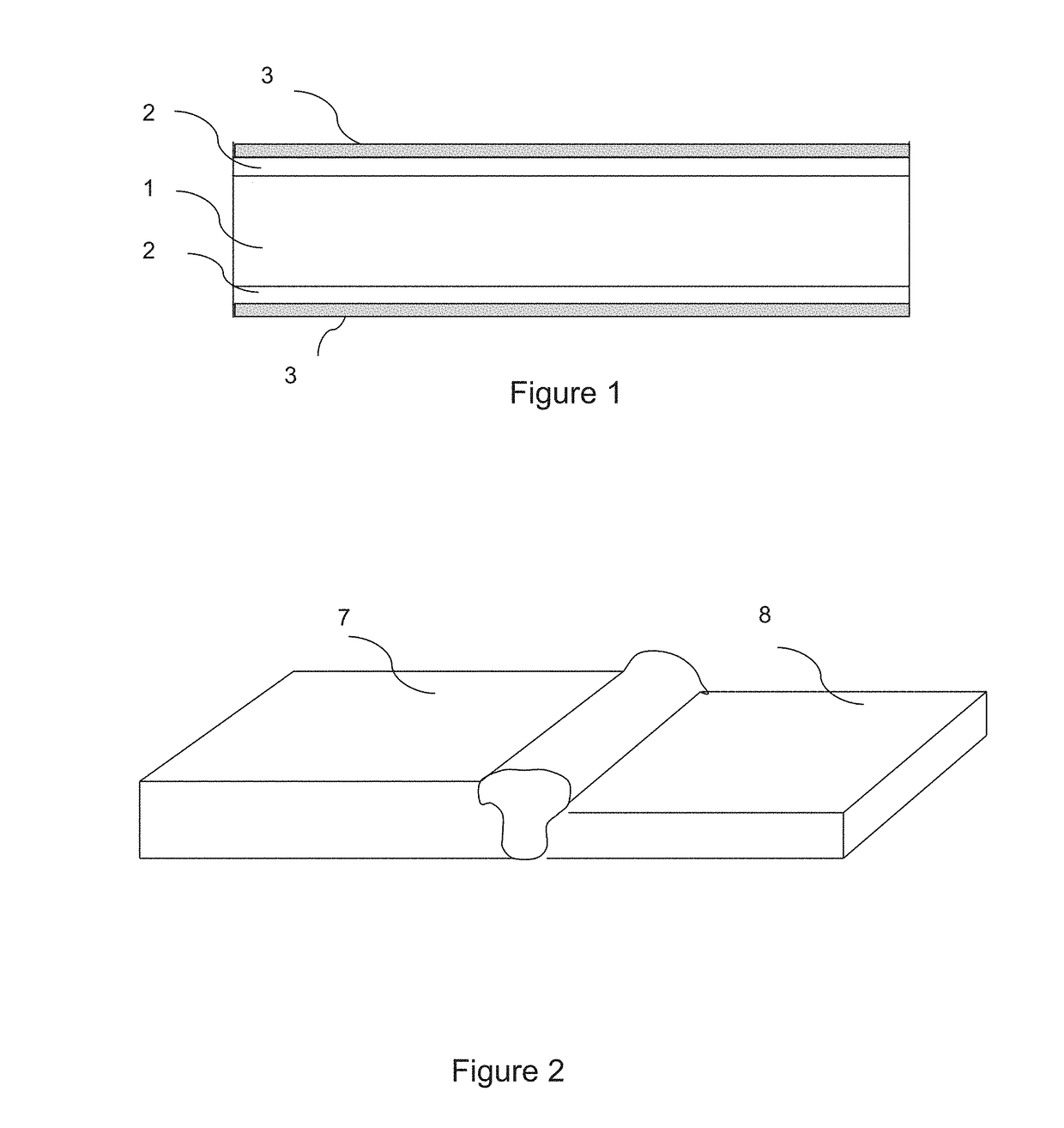Method of producing press-hardened and coated steel parts at a high productivity rate
a technology of press-hardened and coated steel, which is applied in the direction of radiation-absorbing paints, polyester coatings, metal material coating processes, etc., can solve the problems of not being able to obtain these properties, the method completely disregards certain essential problems, and the heating cycle time is reduced, etc., to achieve the effect of reducing the heating cycle time, high adsorption power, and large specific surface area
- Summary
- Abstract
- Description
- Claims
- Application Information
AI Technical Summary
Benefits of technology
Problems solved by technology
Method used
Image
Examples
example 1
[0097]Blanks 1 mm thick were provided made of steel having the following composition in percent by weight: 0.228% C, 1.189% Mn, 0.014% P, 0.001% S, 0.275% Si, 0.028% Al, 0.034% Ti, 0.003% B, 0.177% Cr, the balance being iron and impurities resulting from processing. These blanks comprise a pre-coating 24 μm thick on each surface, containing 9% by weight silicon, 3% by weight iron, the balance being aluminum and unavoidable impurities. On some of these blanks, a layer was then deposited by roll coating over the entirety of the two surfaces composed of polymer and carbon pigments, in aqueous phase, under the different conditions indicated in the table below. The acrylic phenoxy resin contains less than 0.2% nitrogen on the deposited layer. The percent by weight of carbon pigments in these roll-coated layers is indicated in Table 1 below. The layers deposited were dried by passing through a kiln at 70° C. for 5 minutes.
TABLE 1Test conditionsPercent byPercent byweight ofweight ofgraphit...
example 2
[0116]The resistance to different forms of corrosion of hot stamped and press hardened parts fabricated was evaluated according to the conditions I2 (AlSi pre-coating and painting according to the invention) and R2 (AlSi pre-coating alone) from Table 1.
[0117]The resistance to cosmetic corrosion was determined under the following conditions: scratches of different depths were made, affecting only the coating (condition A) or also affecting the substrate (condition B) of hot stamped parts. These parts were subjected to cycles of temperature and moisture in a saline mist for six weeks under the conditions described in the “New VDA Test 233-102”, which is in itself known. The width of blistering at the level of the scratch was then measured. The results are presented in Table 5.
TABLE 5Results of cosmetic corrosionWidth of blistering (mm)Width of blistering (mm)Condition ACondition BI22.74R22.64.2
[0118]Compared to the reference test R2, it was found that the application of paint accordin...
example 3
[0122]Blanks made of 22MnB5 steel 1, 5 and 2 mm thick comprising on both their sides a pre-coating 23 μm thick containing 9% Si and 3% Fe, the balance being aluminum and unavoidable impurities, were acquired. On some of the blanks, a layer composed of polymer and carbon pigments was deposited by roll coating over the entirety of the two principal surfaces under conditions I2 according to the invention indicated in Table 1. The other blanks were not painted (condition R).
[0123]The blanks were heated to 900° C., held at this temperature for one minute, then hot stamped and hardened by holding them in the stamping tool. The diffusible hydrogen content was measured using a thermal desorption analysis method, which is in itself known. The diffusible hydrogen content of these blanks is presented in Table 7.
TABLE 7Diffusible hydrogen contentThickness ofDiffusible hydrogenCoatingthe flan (mm)content (ppm)I21.50.15R1.50.21I220.17R20.25
[0124]The deposit of the specific paint according to the ...
PUM
| Property | Measurement | Unit |
|---|---|---|
| thickness | aaaaa | aaaaa |
| temperature | aaaaa | aaaaa |
| thickness | aaaaa | aaaaa |
Abstract
Description
Claims
Application Information
 Login to View More
Login to View More - R&D
- Intellectual Property
- Life Sciences
- Materials
- Tech Scout
- Unparalleled Data Quality
- Higher Quality Content
- 60% Fewer Hallucinations
Browse by: Latest US Patents, China's latest patents, Technical Efficacy Thesaurus, Application Domain, Technology Topic, Popular Technical Reports.
© 2025 PatSnap. All rights reserved.Legal|Privacy policy|Modern Slavery Act Transparency Statement|Sitemap|About US| Contact US: help@patsnap.com



